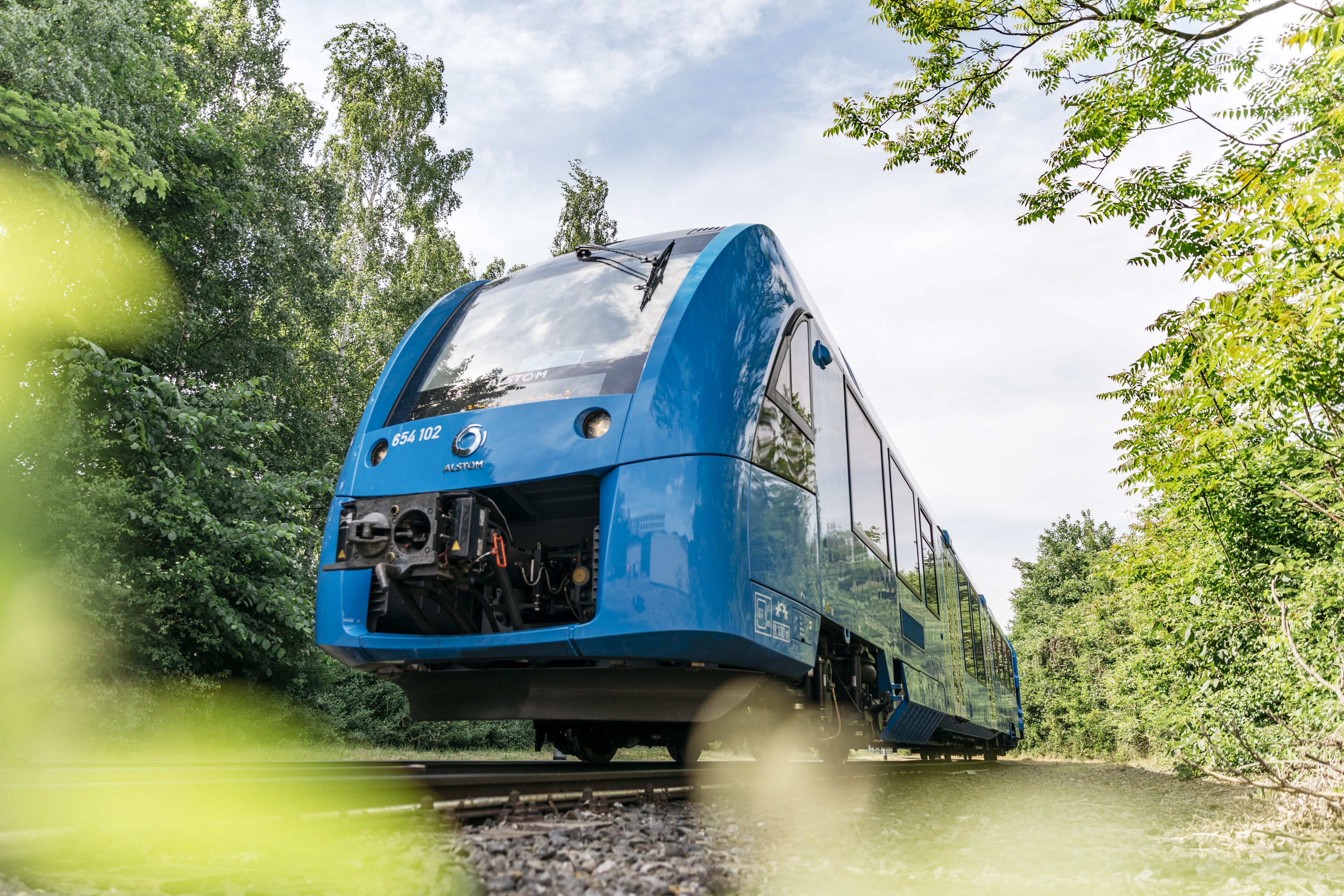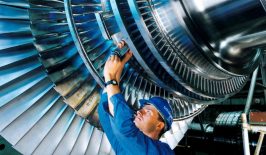Germany has just rolled out the world’s first two hydrogen-powered passenger trains, currently running on a 100km route in the north of the country.
In a world first, the two trains are running just west of Hamburg, between Cuxhaven, Bremerhaven, Bremervoerde and Buxtehude in northern Germany. These hydrogen-powered models are replacing diesel trains, which are prized for their cheap cost to run, as they can run on tracks that are not electrified. The trains are manufactured by the giant French transportation-focused multinational Alstom, who have named them the Coradia iLint and tout them as being “CO2-emission-free”. Alstom is set to deliver a further 14 Coradia iLint trains by 2021.
For those who enjoy long German words, the introduction of these first two trains have been celebrated by the transport authorities of Landesnahverkehrsgesellschaft Niedersachsen and Eisenbahnen und Verkehrsbetriebe Elbe-Weser in Bremervörde. And that celebration is well justified. While the Hydrogen Economy (the concept of delivering energy via hydrogen) is something studied in schools and universities, if it is ever to become a reality it needs research, development, and both companies and countries to take a risk and invest in hydrogen-powered technologies. That’s what this represents.
How these hydrogen trains work
- A hydrogen fuel cell powers the train, emitting only steam and condensed water.
- The fuel cell generates power from a chemical reaction, combining the hydrogen fuel with oxygen.
- The generated energy is used by an electric drivetrain or traction motor, with a small capacity battery used to maintain consistent power levels, and to store energy from regenerative braking.
- Thanks to the better torque delivered by an electric motor, the energy needs of the train are cut by half when compared to diesel trains.
The trains have higher capital costs than diesel, but over their 40-year life cycle are cheaper to run, according to Alstom. “Sure, buying a hydrogen train is somewhat more expensive than a diesel train, but it is cheaper to run,” Stefan Schrank, the project’s manager at Alstom, told AFP.
Is hydrogen fuel really emissions-free?
The H2 fuel itself is possibly the most interesting aspect here. The trains can travel 1000km, or 10 trips, on one tank of gaseous hydrogen. The fuel is stored and supplied from a 40-foot-high steel tank at Bremervoerde, which supplies the hydrogen as required, and the tanks can be filled up in 15 minutes.
Most hydrogen fuel is currently sourced from natural gas, which makes the net ecological equation not hugely better than diesel. Natural gas contains methane (CH4) which can be used to extract hydrogen through a variety of industrial methods, most commonly via steam-methane reforming. Extracting hydrogen from natural gas still generates significant emissions.
But there is a greener way: extracting hydrogen from water via electrolysis, powered by a renewable or zero emission power souce. Solar, wind, and nuclear power can all perform this role. This method results in so-called “green hydrogen” – much more environmentally-friendly, but unfortunately, still much more expensive than conventional methods.
Adding to the potential of the hydrogen economy is a recent breakthrough by Australian scientists, who may have found a solution to the problem of how to transport and store large amounts of the gas. Previously, the financial and energy costs required to do this were prohibitive. But scientists at the CSIRO (Commonwealth Scientific and Industrial Research Organisation) have found a way to use ammonia to generate hydrogen at the source, fuelling hydrogen powered cars from ammonia in a recent demonstration. Ammonia is regularly transported, meaning that there’s sufficient infrastructure already in place. If the technology is proven at an industrial scale, it could help solve the hydrogen fuelling infrastructure problem that’s holding back the wider take-up of the hydrogen-powered trains, cars and even bicycles that are currently on the market.






